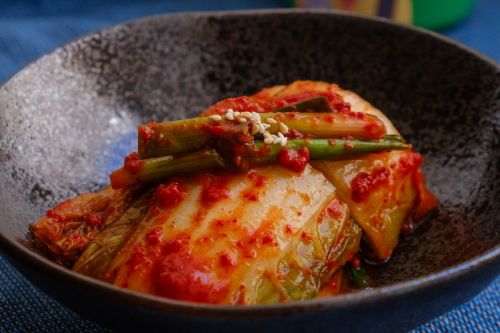Cheesecake - a creamy, slightly sour, melt-in-the-mouth dessert that has invariably pleased plates for many generations. Mysterious in its simplicity, it has become an icon of world cuisine and the recipes for making it have been passed down from generation to generation.
Although the origin of cheesecake is difficult to determine, it is a dessert with a rich history. Many culinary researchers point to its roots in antiquity, with the first references to it dating back to the ancient Greeks.
Curd is a product made from milk that undergoes curdling, followed by gradual heating, cooling, and straining. Cottage cheese is classified as fresh cheese and has a white color and a lumpy or creamy texture.
This cheese contains magnesium, potassium, zinc, and vitamins A, D, and E, as well as B vitamins. Among dairy products, curd contains the least amount of calcium because it only contains just over 80 mg in 100 g of cheese.
In addition to cottage cheese, which is the best choice, cheesecake can also be made with cream cheese or ricotta (Italian whey cheese), to which eggs and sugar are added. Existing recipes in the world allow the use of different types of cheese, but his real cheesecake is made from natural cottage cheese with a high-fat content and low whey content.
The ancient form of cheesecake may have been a popular dessert in Greece, even before its conquest by the Romans. The earliest mention of cheesecake comes from the Greek physician Aegimus, who lived in the fifth century BC and was one of the oldest Greek physicians, the person who wrote a treatise on the pulse. He also wrote a book on the art of cheesecake making (πλακουντοποιικόν σύγγραμμα - plakountopoiikon sungramma).
Perhaps Aegimus wrote a book about cheesecake because he was concerned with the diet of Olympic athletes-they were fed cheesecake and then won the games. The ancient Romans were also familiar with cheesecake. This is evidenced, for example, by Cato the Elder’s work “De Agri Cultura,” which contains recipes for three cakes for religious purposes: librum, savillum, and placenta. Of these three cakes, the placenta most closely resembles a cheesecake. It is a pie consisting of several layers of dough layered with a mixture of cheese and honey, flavored with bay leaves, then baked and topped with honey.
This dessert is also mentioned in the Greek poems of Archestratos and Antiphanes. Archestratos describes placenta (from the Greek plakous) as a dessert served with nuts and dried fruit, praising the honey-soaked Athenian version of plakous.
Antiphanes, on the other hand, left a description of plakous made of wheat flour and goat cheese.
The recipe read as follows: “Crush two kilograms of cheese well in a mortar, add one pound of the bread of wheat flour, mix with the cheese, add one egg, and mix everything well. Form a pancake and bake on a hot stone.”
Athenaeus of Naukratis is the author of the only surviving work consisting of fifteen books, the “Deipnosophistae.” It is mainly a gastronomic work, but also contains a collection of anecdotes, and excerpts from poetic, historical, dramatic, philosophical, oratorical, and medical works.
“Deipnosophistae” mentions the work of Aegimus and also includes a cheesecake recipe.
Subsequent nations took over the recipe, modifying it and adapting it to their conditions by adding local ingredients.
King Henry VIII of England had his favorite version of cheesecake. His chef made cheesecake by cutting the cheese into small pieces, which he soaked in milk for three hours, then added eggs, sugar, and butter to the cheese after straining.
Different types of cheese and additives are used. For example, New York cheesecake requires the addition of Philadelphia cheese, in Japan the cheesecake is prepared in a water bath, which gives it a very light texture. In Spain, the so-called Basque cheesecake is popular, whose charm lies in its slightly burnt top crust. Cheesecake is baked on a short crust or yeast dough base, without a base, with crumble topping, with chocolate frosting, iced, with fruit sauces, and many others.
It was created on the occasion of the “Ninth Cheesecake Festival” in 2013 and made it into the Guinness Book of World Records. The cheesecake was created at Charm City Cakes bakery in Baltimore. This more than three-ton cheesecake was divided into 24.533 servings for the more than 10.000 guests who came to the event, with profits from sales going to charity. The cheesecake was prepared on a baking tray with a diameter of 2.3 meters, 80 cm deep. Philadelphia cream cheese, sugar, butter, and the original shortbread bottom were used.
The previous Guinness World Record in this category was 2 tons and 133 kilograms and belonged to Philadelphia Kraft Foods Mexico in 2009.











